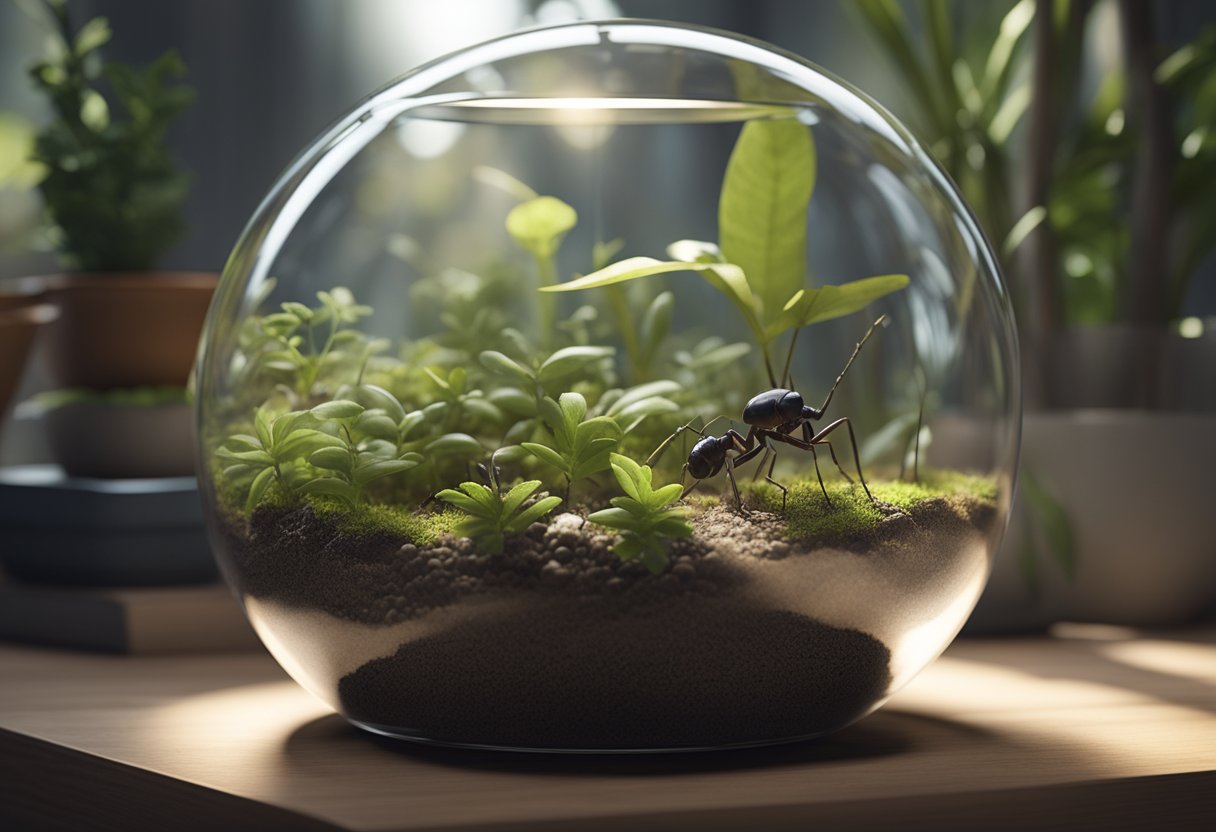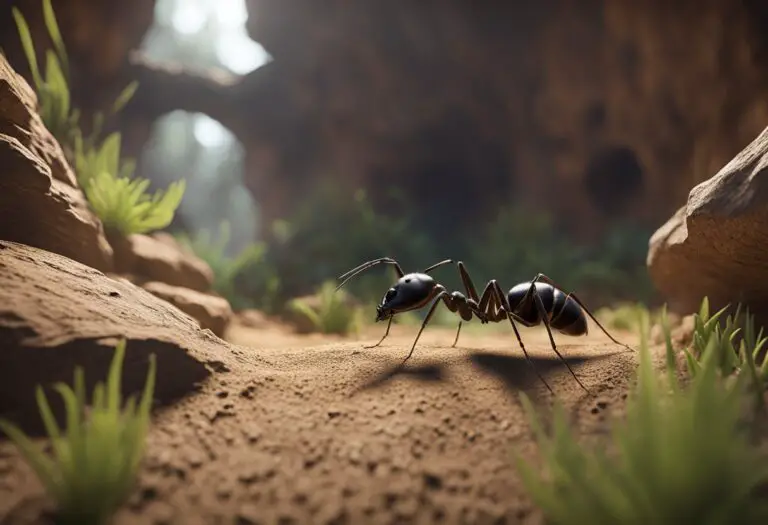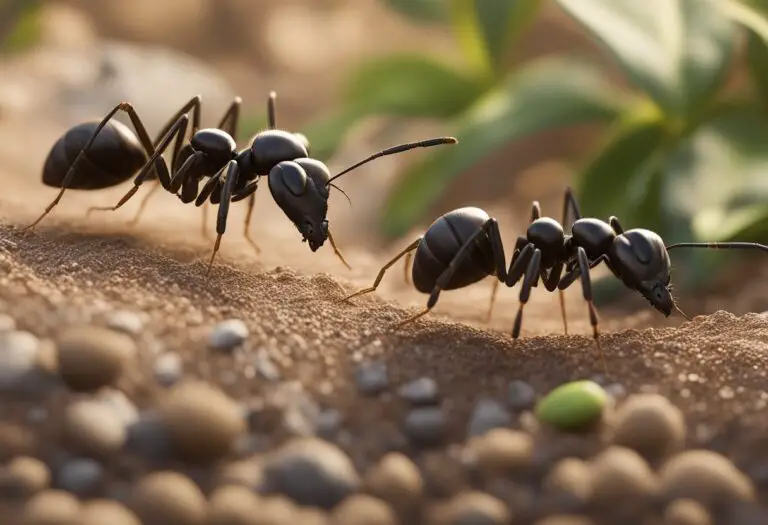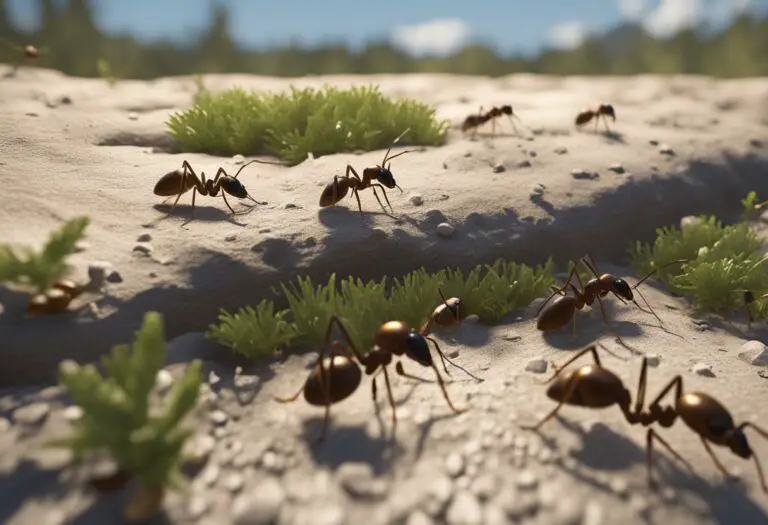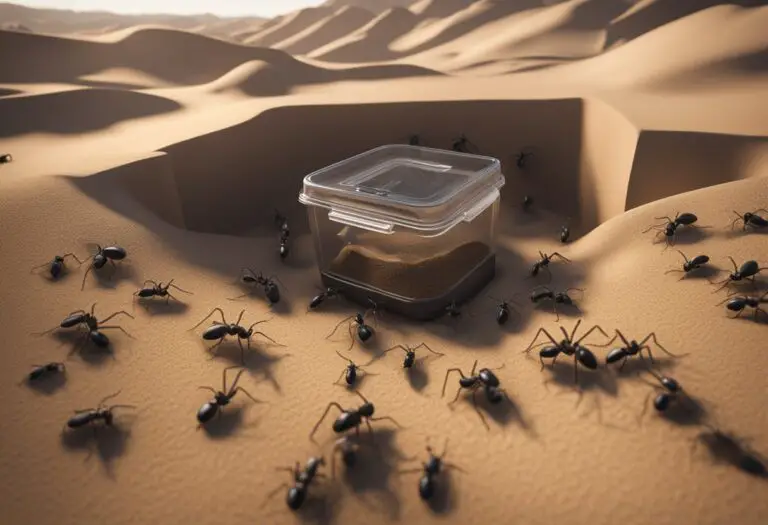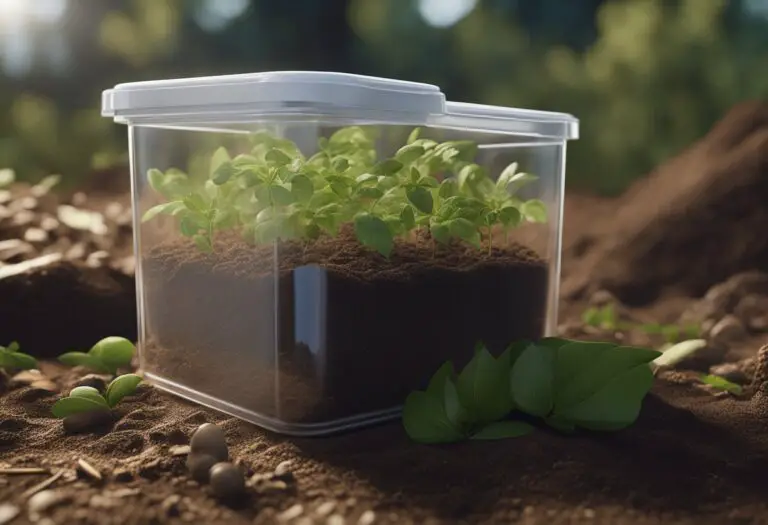How to Create a Naturalistic Ant Habitat? A Step-by-Step Guide
Creating a naturalistic ant habitat can be a fun and educational project for both children and adults. Not only does it provide an opportunity to observe the fascinating behavior of these tiny creatures up close, but it also promotes an understanding and appreciation for the natural world. Whether you are looking to create an ant farm for a science fair project or simply as a hobby, there are a few key steps to follow to ensure the success of your ant habitat.
Firstly, it is important to choose the right type of ant for your habitat. Different species of ants have different habitat requirements, so it is important to do your research and select a species that is well-suited to the conditions you can provide. Secondly, you will need to create an appropriate environment for your ants to thrive in. This may involve constructing a suitable nest area, providing food and water sources, and ensuring that the temperature and humidity levels are within the optimal range for your chosen species. Finally, it is important to monitor your ant habitat regularly to ensure that the ants are healthy and thriving, and to make any necessary adjustments to the habitat as needed.
Understanding Ant Habitats

Natural Ant Behavior
Ants are social insects that live in colonies. They have a complex social structure that includes a queen, workers, and soldiers. Ants are known for their ability to work together to build nests, forage for food, and defend their colonies.
Ants are highly adaptable and can live in a variety of habitats, including forests, deserts, and grasslands. They are also found in urban areas, where they can thrive in parks, gardens, and even in buildings.
Habitat Preferences
Ants have specific habitat preferences that are based on their natural behavior and biology. For example, some ants prefer to live in soil, while others prefer to live in wood or leaf litter.
In order to create a naturalistic ant habitat, it is important to understand the specific habitat preferences of the species of ants you are working with. This can be done by researching the natural habitat of the ants and replicating it as closely as possible in the habitat you create.
Some common elements of a naturalistic ant habitat include a substrate that mimics the natural soil or leaf litter, a water source, and a food source. It is also important to provide hiding places and nesting sites for the ants.
Overall, creating a naturalistic ant habitat requires careful consideration of the natural behavior and habitat preferences of the ants. By replicating their natural environment, you can provide a healthy and stimulating habitat for your ant colony.
Designing the Habitat

Creating a naturalistic ant habitat is a fun and rewarding project that can be easily accomplished with a few simple steps. When designing the habitat, it is important to consider the needs of the ants and replicate their natural environment as closely as possible. Here are some key factors to consider when designing the habitat:
Choosing a Container
The first step in designing the habitat is to choose an appropriate container. The container should be large enough to accommodate the ants and their nest, but not so large that the ants get lost or have difficulty finding food. A clear plastic or glass container is ideal, as it allows for easy observation of the ants. The container should have a lid to prevent the ants from escaping and to maintain humidity levels.
Substrate Selection
The substrate is the material used to line the bottom of the container and provide a foundation for the nest. A natural substrate, such as sand or soil, is best for creating a naturalistic environment. The substrate should be moistened with water to provide the necessary humidity levels for the ants. It is important to avoid using chemicals or pesticides in the substrate, as these can be harmful to the ants.
Temperature and Humidity Control
Maintaining the correct temperature and humidity levels is crucial for the health and well-being of the ants. The temperature should be kept between 20-25°C, and the humidity should be kept between 50-70%. A heat mat or lamp can be used to regulate the temperature, and a misting bottle can be used to maintain the humidity levels. It is important to monitor the temperature and humidity levels regularly to ensure they remain within the appropriate range.
By following these simple steps, you can create a naturalistic ant habitat that provides a comfortable and healthy environment for your ants. With a little bit of patience and care, you can observe the fascinating behavior of these amazing insects up close.
Creating the Environment

To create a naturalistic ant habitat, it is important to create an environment that closely mimics their natural habitat. This can be achieved by planting vegetation and adding ant necessities.
Planting Vegetation
Plants provide a natural environment for ants to live in. They provide shelter, food, and moisture. When selecting plants, it is important to choose ones that are native to the area and that provide a variety of food sources for the ants. Some good options include clover, dandelions, and wildflowers.
It is also important to ensure that the plants are not treated with pesticides or other chemicals that could harm the ants. Organic gardening practices should be used to ensure that the plants are healthy and safe for the ants to live in.
Adding Ant Necessities
In addition to plants, there are other items that are necessary for a naturalistic ant habitat. These include:
- Soil: Ants need soil to create their tunnels and chambers. A mixture of sand and loam can be used to create a suitable environment for them.
- Rocks: Rocks provide shelter and a place for the ants to rest. They can also be used to create a barrier around the habitat to prevent ants from escaping.
- Water: Ants need a source of water to survive. A shallow dish filled with water can be placed in the habitat to provide them with the moisture they need.
By creating an environment that closely mimics their natural habitat, ants will thrive and create a fascinating ecosystem to observe.
Introducing Ants to the Habitat

Selecting Ant Species
Before introducing ants to the habitat, it is important to select the right species. It is recommended to choose a species that is native to the area where the habitat will be placed. This will ensure that the ants are adapted to the local climate and environment, and will have a better chance of thriving in the habitat.
It is also important to consider the size and behavior of the ant species. Some species are more aggressive and territorial, while others are more docile and social. It is recommended to choose a species that is suitable for the size of the habitat and the intended purpose of the ant colony.
Acclimatization Process
Once the ant species has been selected, it is important to acclimate them to the habitat. This process involves gradually introducing the ants to the new environment, in order to reduce stress and increase their chances of survival.
To acclimate the ants, place the container with the ants in a shaded area near the habitat for a few hours each day. Gradually increase the time that the ants spend outside the container, until they are spending the majority of their time in the habitat.
It is important to monitor the ants closely during the acclimatization process, and to provide them with food and water as needed. Once the ants have fully acclimated to the habitat, they can be released into the colony.
By following these steps, you can successfully introduce ants to their new habitat and create a naturalistic environment for them to thrive in.
Habitat Maintenance

Maintaining a naturalistic ant habitat is crucial to the health and well-being of the ants living in it. Proper habitat maintenance involves ensuring that the ants have access to food, a clean living space, and monitoring their health.
Feeding the Ants
Feeding the ants in a naturalistic habitat is relatively easy. The best way to feed them is by providing them with a variety of foods, including fruits, vegetables, and proteins. It is important to avoid feeding them sugary foods, as this can lead to health problems.
One way to ensure that the ants have access to food is by placing it in a small dish or container in the habitat. This will prevent the food from getting mixed in with the soil and becoming contaminated. It is also important to remove any uneaten food after a day or two to prevent it from rotting and attracting pests.
Cleaning the Habitat
Keeping the habitat clean is essential to the health of the ants. It is recommended to clean the habitat once a week by removing any debris, dead insects, or uneaten food. This can be done by using a small brush or vacuum to remove any debris, followed by wiping down the habitat with a damp cloth.
It is also important to replace the soil in the habitat every few months. This will help prevent the buildup of harmful bacteria and ensure that the ants have a clean living space.
Monitoring Ant Health
Monitoring the health of the ants is crucial to catching any potential health problems early on. This can be done by observing the ants’ behavior, such as their activity level and feeding habits. If any abnormalities are noticed, such as lethargy or a lack of appetite, it may be necessary to consult a veterinarian who specializes in exotic pets.
In addition to observing the ants’ behavior, it is also important to regularly inspect the habitat for any signs of mold or pests. Mold can be harmful to the ants’ health, while pests such as mites and spiders can prey on the ants.
By following these simple steps, it is possible to create and maintain a naturalistic ant habitat that is both healthy and enjoyable for the ants living in it.
Observation and Study

Ants are fascinating creatures that exhibit a wide range of behaviors. To create a naturalistic ant habitat, it is important to observe and study these behaviors. This will allow you to make adjustments to the habitat to ensure that the ants are healthy and happy.
Behavior Tracking
Observing the behavior of ants is an important part of creating a naturalistic ant habitat. By tracking their behavior, you can identify any problems with the habitat and make adjustments accordingly. Some behaviors to look out for include:
- Foraging: Ants will leave the nest in search of food. By observing their foraging behavior, you can determine what types of food they prefer and adjust the habitat accordingly.
- Nest Building: Ants will build their nests in a variety of locations. By observing their nest building behavior, you can determine what types of materials they prefer and make sure they have access to them.
- Communication: Ants communicate with each other using pheromones. By observing their communication behavior, you can determine how they are interacting with each other and make any necessary adjustments to the habitat.
Habitat Adjustments
Once you have observed the behavior of the ants, you can make adjustments to the habitat to ensure that they are healthy and happy. Some adjustments you may need to make include:
- Temperature: Ants prefer temperatures between 70-80°F. If the temperature in the habitat is too low or too high, you may need to adjust it.
- Humidity: Ants prefer a humid environment. If the habitat is too dry, you may need to add moisture.
- Lighting: Ants prefer a dark environment. If the habitat is too bright, you may need to adjust the lighting.
By observing the behavior of ants and making adjustments to the habitat accordingly, you can create a naturalistic ant habitat that will keep your ants healthy and happy.

